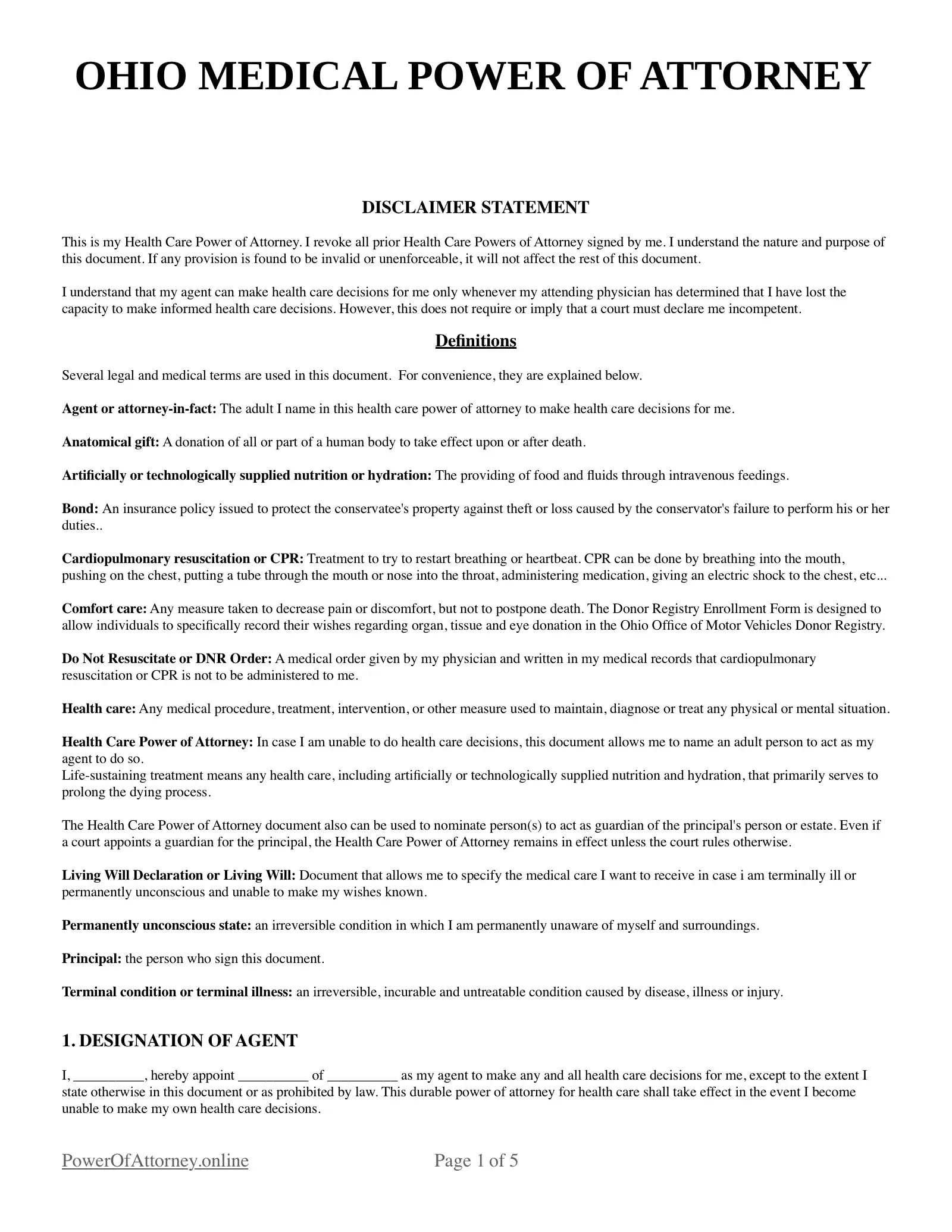Free Ohio Medical Power of Attorney Forms
If you want to authorize someone to make healthcare decisions on your behalf in Ohio, you must get a medical power of attorney (POA). This document will allow your chosen agent to represent you if you become legally incapacitated or incompetent.

Ohio Medical Power of Attorney Laws
There are several laws that outline how a medical power of attorney can help you in Ohio. These laws define the legalities and limitations of a medical POA, including how it can be instituted and terminated.
A POA allows for the conveyance, mortgage, or lease of any real property to be signed, acknowledged, and certified as outlined in the Revised Code. (Chapter 1337 - Ohio Revised Code.)
This ensures that the POA is properly executed, valid, and has the principal’s permission. (Section 5301.01, Ohio Revised Code.)
Witnesses of a medical POA in Ohio need the signature of the principal, the chosen agent, and other witnesses who are legally authorized to acknowledge it. (Chapter 1337.12 - Ohio Revised Code.)
Signing Requirements in Ohio
In the state of Ohio, a medical POA is only recognized when it is signed in the presence of a notary public (NP) and several witnesses. It should be signed and dated by the principal at the end of the document with a statement that specifies the agent’s identity who will act as attorney in fact. (Section 1337.25 of the Ohio Revised Code.)
Witnesses will also have to supply their signatures and addresses, while the principal has to prove their signature is theirs through IDs and other documents. Finally, the NP will sign and make the POA legally binding.
How To Write a Medical POA in Ohio
Writing a POA is easy, especially when you have a downloadable and printable PDF document that can serve as a template. Here’s a step-by-step explanation for writing a durable POA in Ohio.
1. Delegate your principal power to an agent.
Choose an agent to whom you can delegate your authority as principal. You can then download a PDF form that serves as a POA template. Make sure you can confirm your address and identity with the appropriate documents.
2. Document the names of the principal and the agents for proper identification.
The POA will start with a declaration of the name of the agent and the principal. Their names and addresses should be on the form. The date should also be included in the document with the current day, month, and year in the designated spaces.
3. Review and authorize the ways in which the agent can act in the principal’s name.
The “Powers Of Attorney-in-fact” section lists the various acts or transactions that the agent can execute for the principal. This could include making decisions and specific actions related to healthcare. The principal needs to review this section which enumerates the various ways in which the agent can act on their behalf.
If everything is in order, the principal can sign or affix their initials on the document. However, if the principal disagrees with the contents of the medical power of attorney, they must leave it unmarked so that the agent cannot act for them in the ways specified.
4. The principal, the agent, several witnesses, and an NP must sign the document to make it effective.
The POA will only become effective when the section titled “State Law” identifies the state where the document will take effect. The principal, agent, and witnesses will then sign the document.
After, the notary public will add their credentials and signature to finalize it and make it effective according to the executable date.